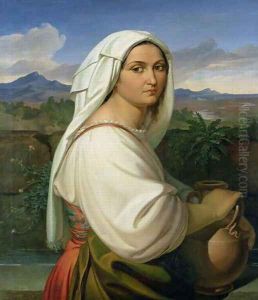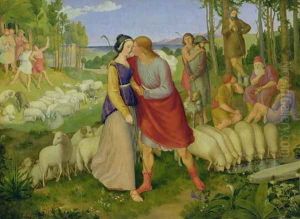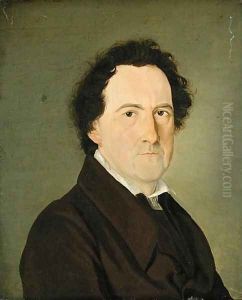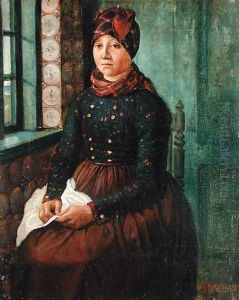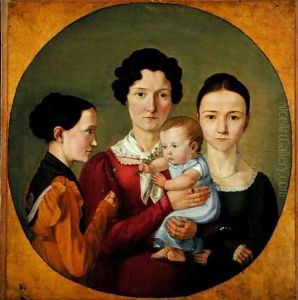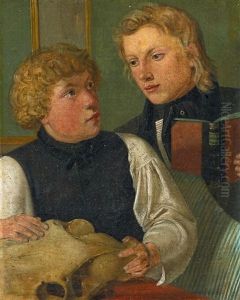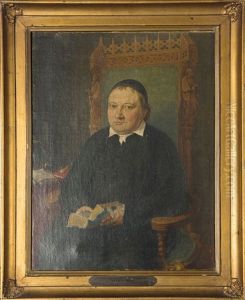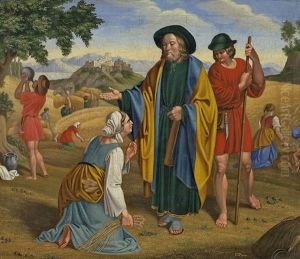Erwin Speckter Paintings
Erwin Speckter was a German painter born on November 14, 1806, in Hamburg. He was part of the early 19th-century Romantic movement, which emphasized emotion and individualism as well as glorification of the past and nature. Speckter was the son of a well-known engraver, Johann Michael Speckter, who provided him with an artistic environment from a young age. Erwin's early exposure to the arts profoundly influenced his career choice and artistic development.
Erwin Speckter received his initial training from his father and later studied under other established artists of the time. In 1827, he went to Munich, which was a significant center for German artists, to continue his studies. There, he became associated with the Nazarenes, a group of romantic painters who aimed to revive honesty and spirituality in Christian art. During his time in Munich, Speckter developed a style characterized by its vivid detail, bright colors, and a tendency to depict scenes with a narrative quality.
Despite his affiliation with the Nazarenes, Speckter was also influenced by the works of other contemporary artists and maintained a unique artistic identity. His oeuvre includes portraits, genre scenes, and illustrations. One of his most notable works was the illustrations for 'Reineke Fuchs' ('Reynard the Fox'), a version of the medieval German folk epic, which were published posthumously.
Unfortunately, Erwin Speckter's life and career were cut short when he died of typhus on March 22, 1835, in Munich at the age of 28. His premature death meant that his artistic potential was never fully realized, but the works he left behind demonstrate a keen eye for detail, a deep appreciation for storytelling, and a romantic sensibility that aligns him with some of the key artistic movements of his time.
